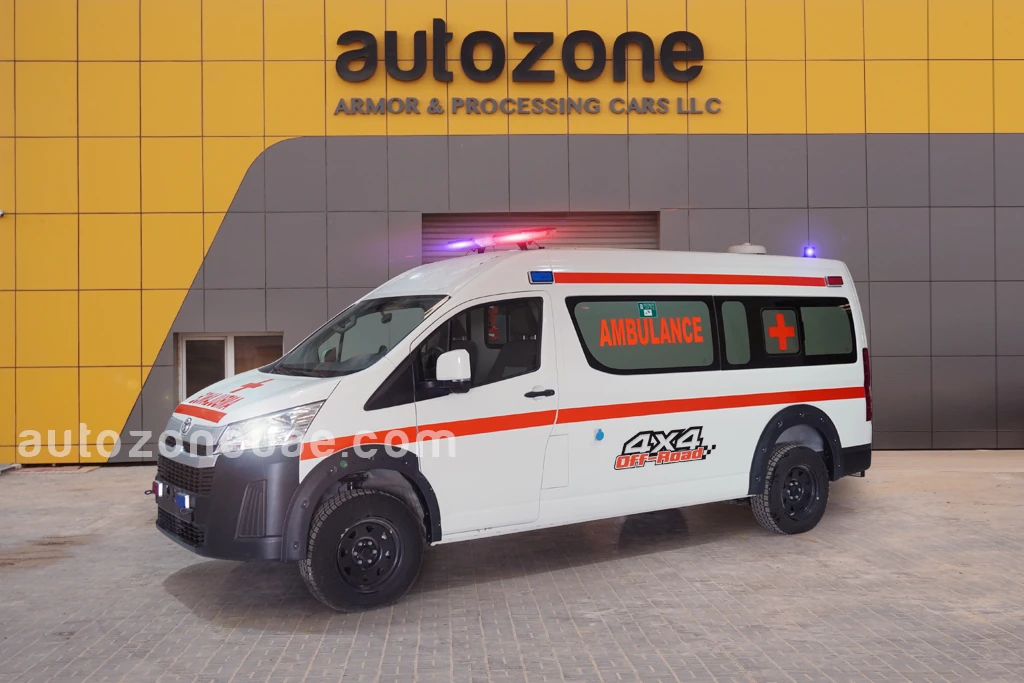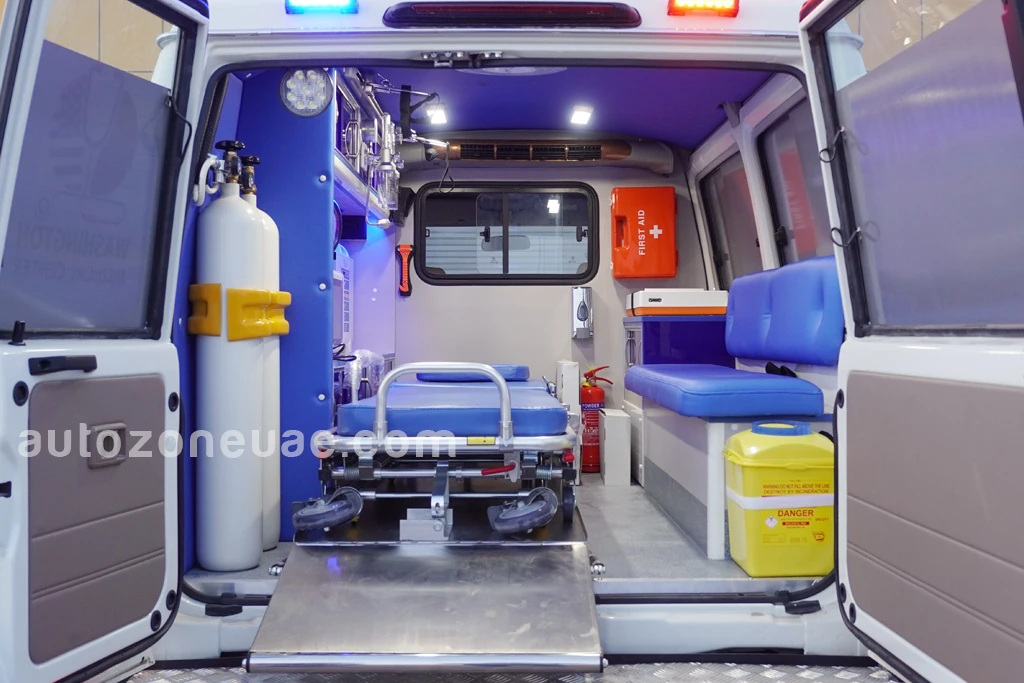When you hear the term “ambulance,” what comes to mind? Most likely, flashing lights, sirens, and an urgent race to save a life. While this depiction isn’t incorrect, there’s a growing trend that’s giving ambulances a new lease of life: ambulance conversion. So, let’s dive into this engaging transformation and discover why ambulance conversion has taken the world by storm.
A Glimpse into Ambulance Conversion
Ambulance conversion, though a term that might sound peculiar at first, is an evolving trend in the creative reuse community. You might wonder, what does it entail? At its core, ambulance conversion is about breathing new life into vehicles that once played a pivotal role in medical emergencies.
Origins and Evolution
Historically, once ambulances reached the end of their service life in emergency medical settings, they were either auctioned off, sold as used vehicles, or, in some sad cases, left to decay. However, visionaries saw potential in these robust, well-maintained machines. Instead of allowing them to become relics of the past, they started transforming them into functional, often mobile, spaces. Remarkably, this marked the beginning of the ambulance conversion trend.
In essence, ambulance conversion is about envisioning a second life for a vehicle that has already given so much to society. It’s a blend of sustainability, creativity, and respect for the vehicle’s original purpose. Moreover, as we continue to evolve in our approach to reuse and recycling, such conversions stand as a testament to human ingenuity and resourcefulness.
Why converts an ambulance?
· Built to Last:
Ambulances are designed to be reliable and sturdy. They frequently traverse rough terrain and city streets, making them a robust base for any conversion project.
· Unmatched Storage:
Those medical supplies have to go somewhere, right? Ambulances come with an array of cabinets and compartments, making them an organizer’s dream.
· Electrical Systems:
Ambulances are equipped with sophisticated electrical systems. This is a boon for those looking to install appliances or entertainment systems.
Inspiring Ambulance Conversions
· The Traveling Nomad:
Many adventurers are turning to ambulance conversions to create their dream campervan. Its sturdy design and ample storage make it perfect for long journeys.
· Mobile Businesses:
From food trucks to mobile salons, entrepreneurs are leveraging the space and utilities of ambulances to bring their business dreams to life.
· Mobile Studios:
Artists and creators have found ambulance manufacturer UAE to be the perfect space to create, whether it’s painting, recording, or even photography.
The Conversion Process
Converting an ambulance isn’t a weekend task. It requires planning and execution. Here are some steps to kickstart your conversion:
· Vision Mapping:
Understand your needs and how they fit into the available space.
· Dismantling:
Strip the ambulance of its medical equipment and sanitize it thoroughly.
· Electrical and plumbing:
Revamp or adapt the existing systems based on your needs.
· Design and decor:
The fun part! Transform the space to reflect your personality and needs.
Challenges in Conversion
Transforming an ambulance into a unique, functional space presents a myriad of opportunities, but with those opportunities come challenges. Let’s delve deeper into the complexities of the conversion process and how prospective converters can navigate these challenges.
1. Sourcing Parts and Materials
- Availability
Finding specific parts for older ambulance models can be a tedious task. Given that some parts might be outdated or out of production, sourcing them becomes a game of patience and resourcefulness.
- Cost
Specialty parts, or those in limited supply, can be expensive. Balancing the budget while ensuring the quality of the conversion can be a tightrope walk.
2. Electrical and Mechanical Overhauls
- Complex Systems:
Ambulances come equipped with intricate electrical systems to support life-saving equipment. Repurposing these for everyday or specialized use requires a deep understanding and sometimes a complete overhaul.
- Maintenance:
Older ambulances might have mechanical wear and tear. Ensuring the vehicle’s long-term functionality might require significant repairs and regular maintenance.
3. Legal and Regulatory Hurdles
- De-commissioning Medical Equipment:
Certain equipment, especially those that once stored medications or biohazards, needs to be properly decommissioned or disposed of to ensure safety and compliance with health regulations.
- Vehicle Regulations:
Each jurisdiction has its own rules regarding vehicle modifications. For instance, it might be illegal in some places to have certain colored lights (like blue or red) on a non-emergency vehicle.
- Zoning and licensing:
If the ambulance is being converted into a mobile business, there might be zoning laws, permits, and licenses that need to be obtained.
4. Space Constraints
- Maximizing Utility:
While an ambulance offers a decent amount of space, it’s not infinite. Designing a layout that maximizes every inch without feeling cramped is an art.
- Weight Distribution:
Adding new structures or equipment can alter the vehicle’s weight distribution, potentially affecting its handling and safety.
5. Insulation and Temperature Control
- Adapting for Comfort:
Ambulances are designed for short emergency trips, not prolonged stays. Therefore, insulation and temperature control systems might need enhancement, especially if the vehicle is being turned into a living space.
6. Community Perception
- Overcoming Stigma:
An ambulance, given its original purpose, might evoke certain emotions or perceptions in the community. Some might find a repurposed ambulance fascinating, while others might have reservations. It’s crucial to be sensitive to these perceptions, especially if the conversion is for a public-facing purpose.
Environmental Benefits
Recycling on Wheels:
Converting an ambulance is an excellent example of large-scale recycling. Instead of letting these vehicles go to waste, they are transformed into something beneficial and sustainable.
Carbon Footprint:
Repurposing an existing vehicle reduces the demand for new vehicle production, indirectly cutting down on the associated carbon emissions.
Economic Perspective
Ambulance conversions can be seen as an economical choice. For budding entrepreneurs or travel enthusiasts, starting with a pre-existing frame can be more cost-effective than investing in brand-new structures or vehicles.
Technical Aspects
Insulation:
Ambulances already come with a certain degree of insulation, which is beneficial for those thinking of converting them into living or working spaces.
Power Systems:
The electrical infrastructure present can be a boon. With a few tweaks, one can have a powerful system ready for various uses.
Legal and regulatory concerns
While converting an ambulance is an exciting project, one must be aware of the local laws. Some areas may have restrictions or requirements, from the use of sirens and lights to emblems and paint.
The road ahead
The increasing interest in ambulance conversions indicates a shift in societal thinking. It’s not just about reusing; it’s about reimagining. The potential for what an ambulance can become after its life-saving days is limited only by imagination.
Conclusion
As we’ve journeyed through the fascinating world of ambulance conversion, it’s evident that these vehicles offer more than just emergency medical services. Repurposed for various creative endeavors and practical uses, converted ambulances demonstrate the sheer versatility and innovation of human imagination. From mobile homes to business hubs, these conversions are breaking stereotypes and proving that, with a bit of ingenuity, even the most unexpected objects can find a new purpose. As we continue to witness the evolution of ambulance conversion, it reminds us of the limitless potential of repurposing and the beauty of seeing beyond the obvious. After all, in the realm of creativity, nothing truly goes to waste.

 AR
AR FR
FR







